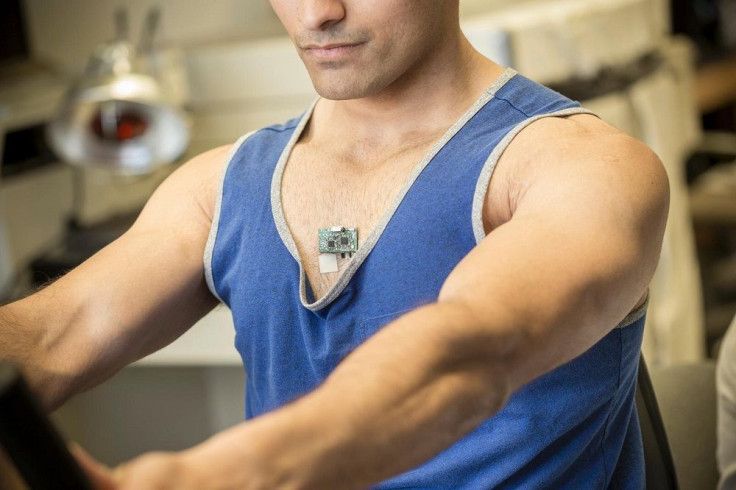UC San Diego researchers develop Chem-Phys patch to measure electrical heart signals & biochemical markers while working out

A team of University of California San Diego researchers has developed a wearable device which could be a replacement for heart rate monitor in the future. The flexible gadget could measure electrical heart signals and biochemical markers while the user is working out.
It records the electrocardiogram (EKG) of the heart’s activity and levels of lactate, a chemical which correlates with physical exertion, at the same time. The device’s circuitry is printed on a thin and flexible polyester sheet.
It has a small on-board chip that transmits the data to a nearby gadget using Bluetooth. The team is addressing the challenge the device presents to ensure the signals do not interfere with each other, reports Gizmodo.
To minimise noise, the team positioned its EKG electrodes 1.5 inches apart and placed the lactate sensor in the middle. Devices that are so thin and tiny have the problem of its electric signals generating cross-talks in circuits placed close to each other.
A team led by Joseph Wang, nanoengineering professor, worked on the sensors and chemistry of the patch. The other team, led by Patrick Mercier, electrical engineering professor, also from the university’s Jacob School of Engineering, developed the electronic and data transmission, creating the Chem-Phys patch discussed in the May 23 issue of Nature Communications.
“One of the overarching goals of our research is to build a wearable tricorder-like device that can measure simultaneously a whole suite of chemical, physical and electrophysiological signals continuously throughout the day. This research represents an important first step to show this may be possible,” says Mercier.
The team tested the gadget on three men who wore it on their chest, near the base of their sternum. It was worn while the three did 15 to 30 minutes of intense activity on a stationary bike. Two of them also had a commercial wristband heart rate monitor. When compared, the data collected by the EKF electrodes on the Chem-Phys patch closely matched those taken by the commercial wristband.





















